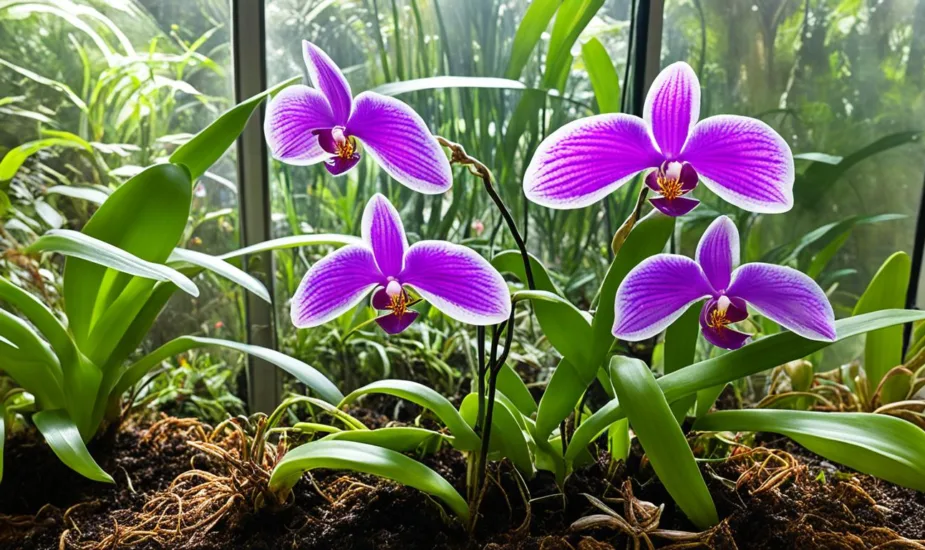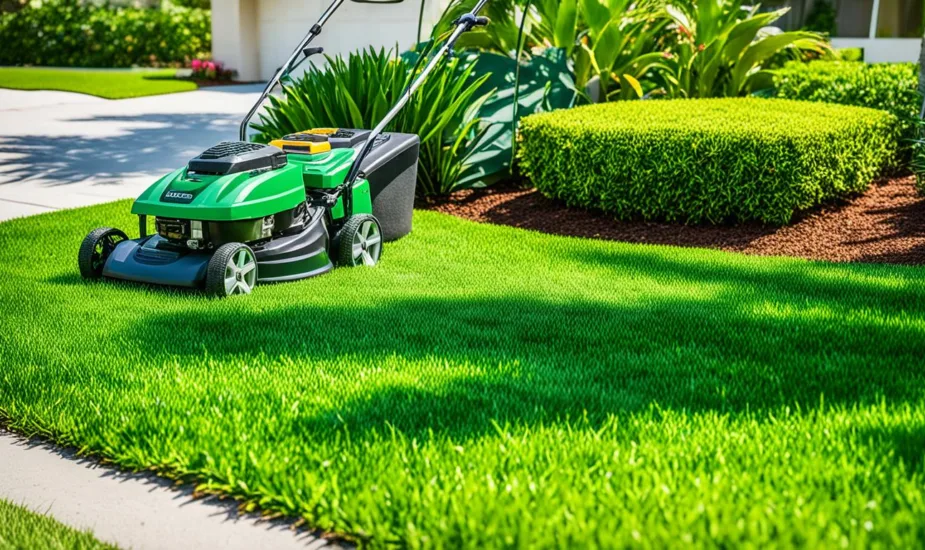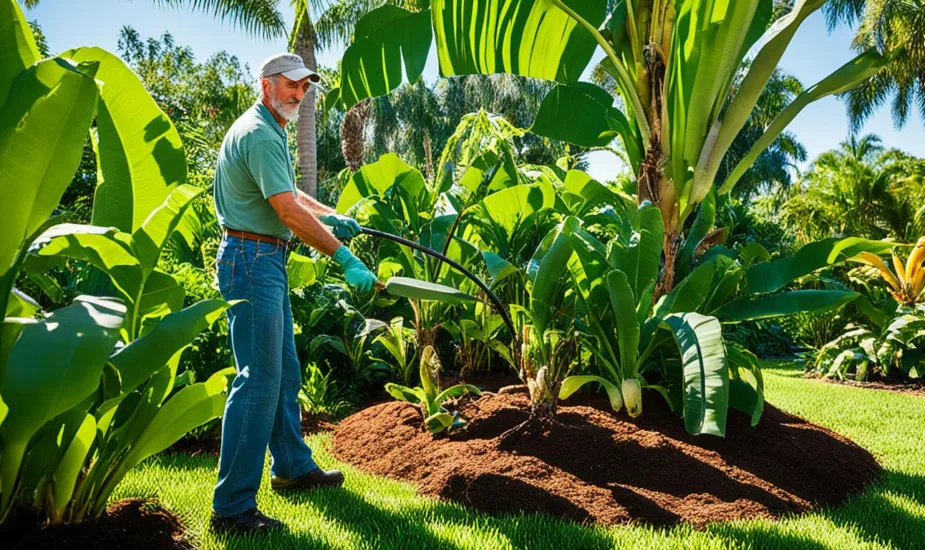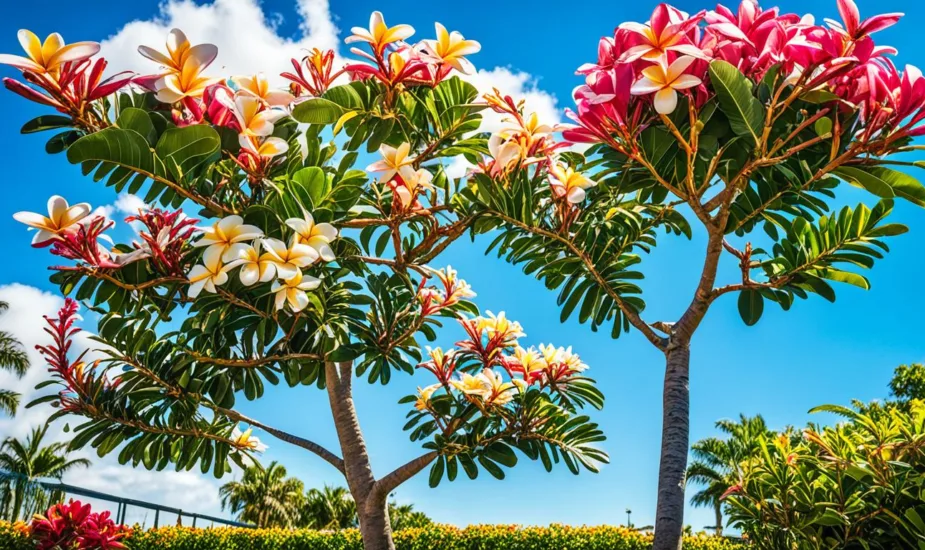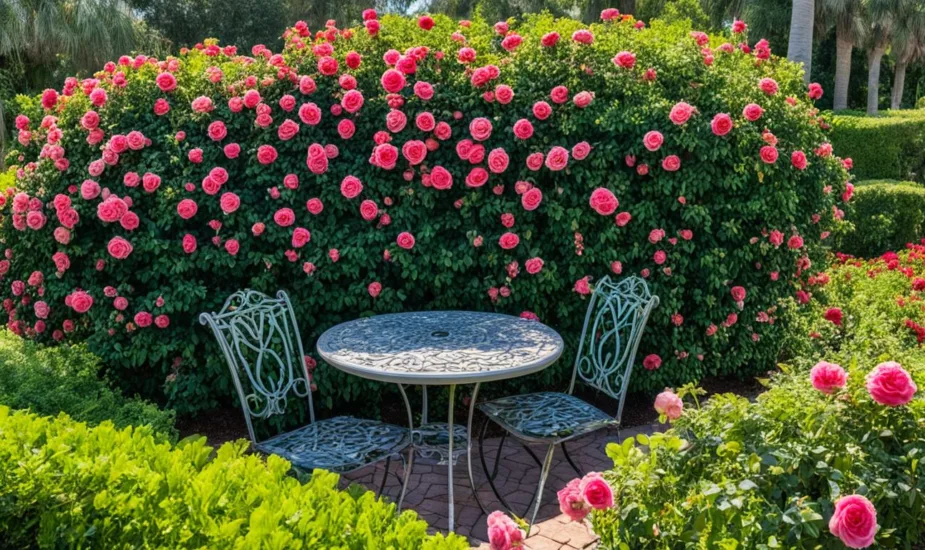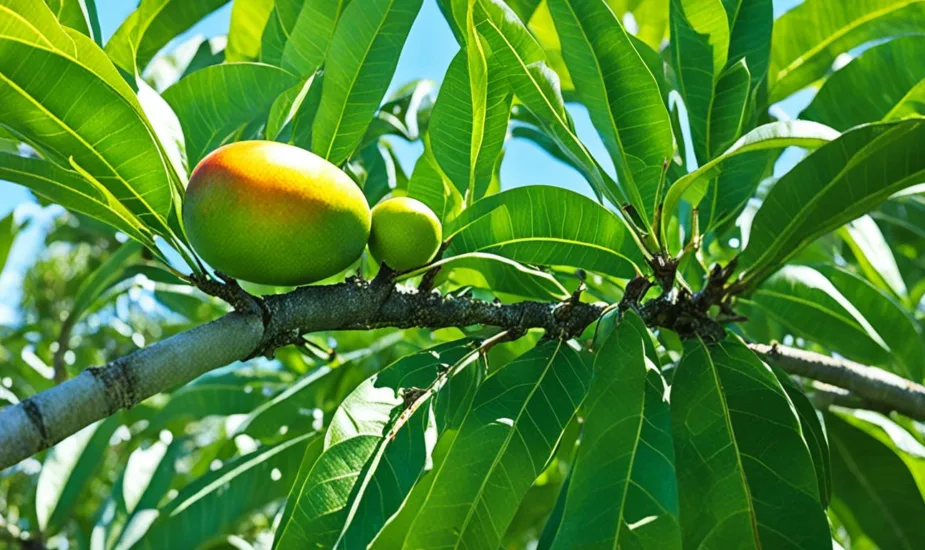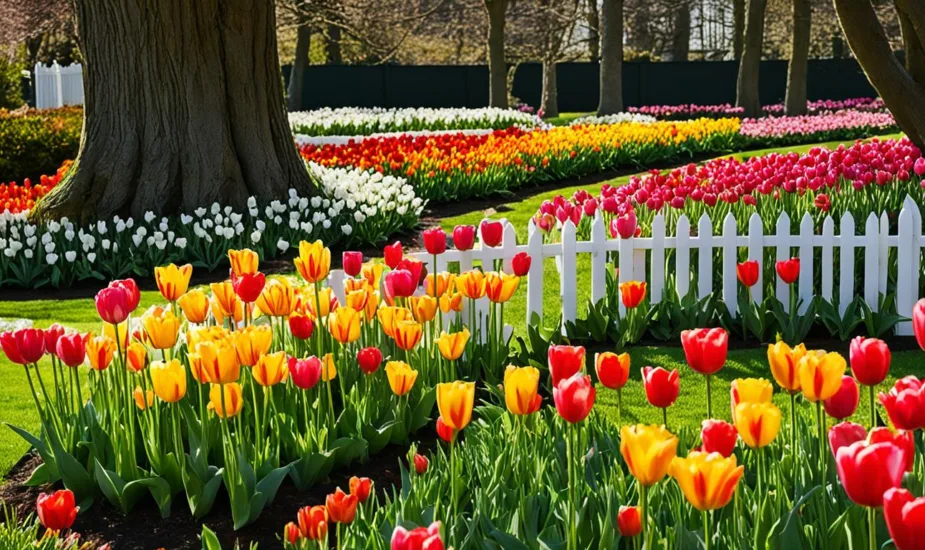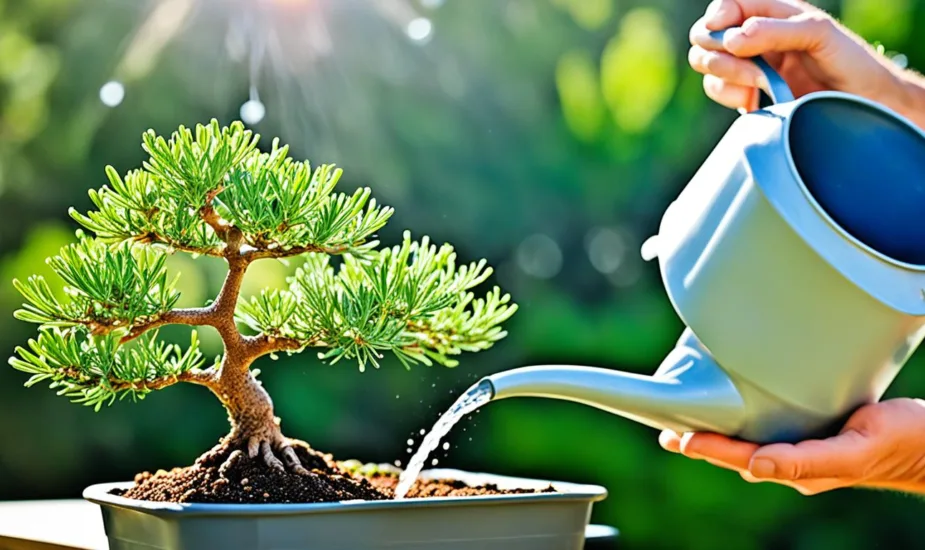Florida Begonia Care Guide: Tips for Thriving Plants
Unlock the secrets to flourishing begonias with my Florida Begonia Care Guide—expert tips tailored for the Florida climate to keep your begonias vibrant.
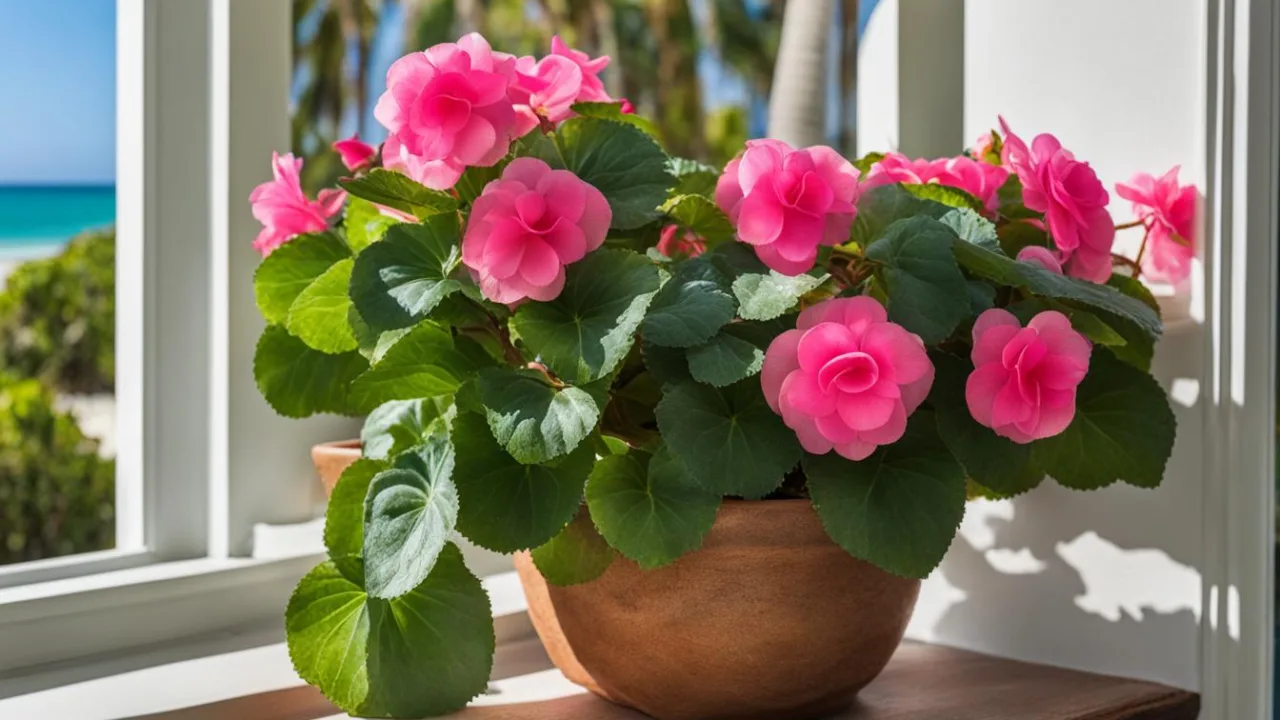
Imagine strolling through a lush garden, filled with vibrant flowers and captivating foliage. Among the blooming beauties, one plant stands out—the begonia. With its striking colors and unique leaf shapes, begonias have long been a favorite among garden enthusiasts. Their versatility and adaptability make them suitable for various climates, including the sunny state of Florida.
As a passionate gardener myself, I understand the importance of providing the right care for begonias to ensure they thrive in Florida’s distinct climate. In this comprehensive guide, I will share my knowledge and experience to help you create the perfect environment for your begonias to flourish.
Key Takeaways:
- Understanding the specific requirements of begonias in the Florida climate is essential for optimal care.
- Proper lighting, humidity levels, and temperature control are key factors in establishing the ideal environment for begonias in Florida.
- Watering practices, shade and sun exposure, and protection from temperature extremes are crucial considerations for begonia care in Florida.
- Both indoor and outdoor settings offer unique benefits and challenges for begonia care in southern locations.
- Choosing the right begonia species for your Florida garden will ensure the best chances of success.
Begonia Care in Florida: Establishing the Ideal Environment
When it comes to growing begonias in Florida, creating the ideal environment is crucial for their health and vitality. This section will delve into the key factors that contribute to the optimal growth of begonias in the Florida climate, providing practical advice on how to care for these beautiful plants.
Proper Lighting: Begonias thrive in bright, indirect light. Place them near windows that allow filtered sunlight to keep them happy. However, direct sunlight can scorch their leaves, so it’s important to provide adequate shade during the hottest part of the day.
Humidity Levels: Begonias require higher humidity levels to flourish. Consider using a humidifier or placing a tray filled with water near your begonias to increase humidity. Misting the leaves regularly can also help maintain the desired humidity levels.
Temperature Control: Begonias prefer temperatures between 60°F and 75°F (15°C and 24°C) during the day and slightly cooler temperatures at night. Avoid exposing them to extreme temperature fluctuations or drafts, as they are sensitive to temperature changes.
To further illustrate the importance of these factors, let’s take a closer look at the specific requirements for lighting, humidity, and temperature control for begonias in Florida:
“Proper lighting, humidity levels, and temperature control are essential for creating the ideal environment for begonias in Florida.”
By establishing the ideal environment for your begonias, you can ensure their health and promote optimal growth. In the following sections, we will explore Florida’s unique climate considerations in more detail, including adapting to humidity, managing shade and sun exposure, and protecting begonias from temperature extremes, to help you become a successful begonia caretaker in the Sunshine State.
Understanding Florida’s Climate for Optimal Begonia Care
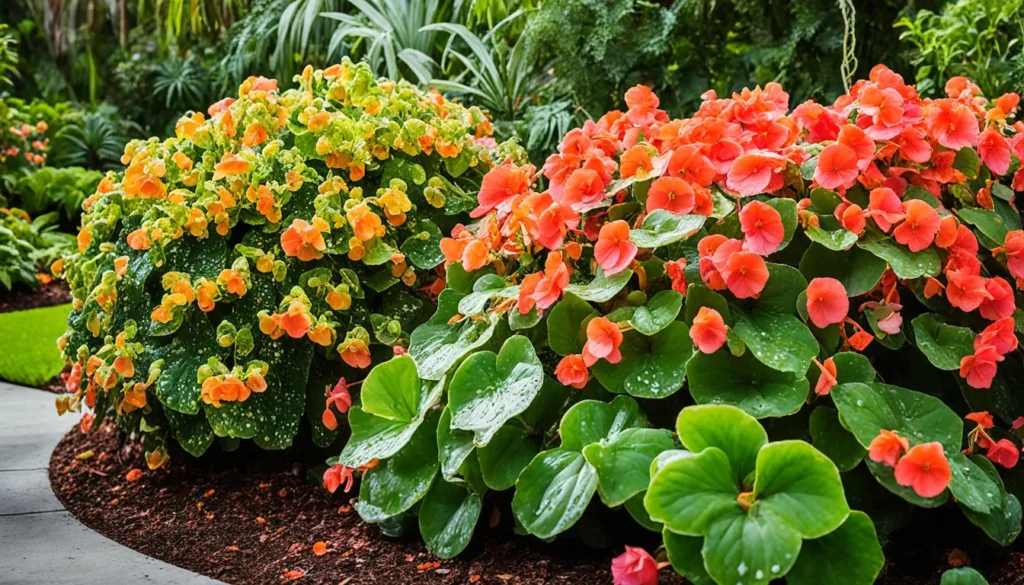
When it comes to caring for begonias in Florida, it is important to understand the unique climate conditions that can impact their growth and health. Florida’s warm and humid climate poses both challenges and opportunities for begonias, and by adapting our care practices to suit these conditions, we can ensure that our begonias thrive.
Adapting to the Humidity: Watering Practices
Humidity is a significant factor to consider when caring for begonias in Florida. These plants prefer moderate humidity levels, so it is essential to strike the right balance when watering them. Overwatering can lead to root rot, while underwatering can cause stress and leaf drop.
One effective watering practice is to check the moisture level of the soil regularly before watering. Stick your finger about an inch into the soil; if it feels dry at that depth, it’s time to water. Additionally, using a well-draining potting mix can prevent waterlogged soil, ensuring proper drainage and preventing root rot.
Shade and Sun Exposure for Begonias in Florida
The Florida sun can be intense, particularly during the summer months. While begonias thrive in bright, indirect light, they generally prefer some shade to protect them from direct sunlight. Placing your begonias in areas with filtered light or partial shade can prevent leaf scorching and maintain optimal growth.
Keep an eye on the sun exposure your begonias receive throughout the day. If they are spending too much time in direct sunlight, consider moving them to a shadier spot or providing some form of shade, such as a sheer curtain or outdoor umbrella. This will ensure that your begonias receive the right amount of light without being overwhelmed by the harsh rays of the Florida sun.
Protecting from Temperature Extremes
Florida’s climate can be prone to temperature extremes, with hot summers and occasional cold spells in winter. These temperature fluctuations can impact the health and growth of begonias.
To protect your begonias from extreme heat, consider moving them to a more shaded area during the hottest part of the day or providing some form of protection from the intense afternoon sun. Mulching around the plants can also help retain moisture and regulate soil temperature.
During cold spells, it is important to bring your outdoor begonias indoors or provide them with sufficient protection to prevent frost damage. Consider covering them with frost blankets or moving them to a warmer, sheltered location until the temperatures rise.
By understanding and adapting to the specific climate conditions in Florida, we can provide optimal care for our begonias and ensure their health and beauty throughout the year.
Indoor Versus Outdoor Begonia Care in Southern Locations
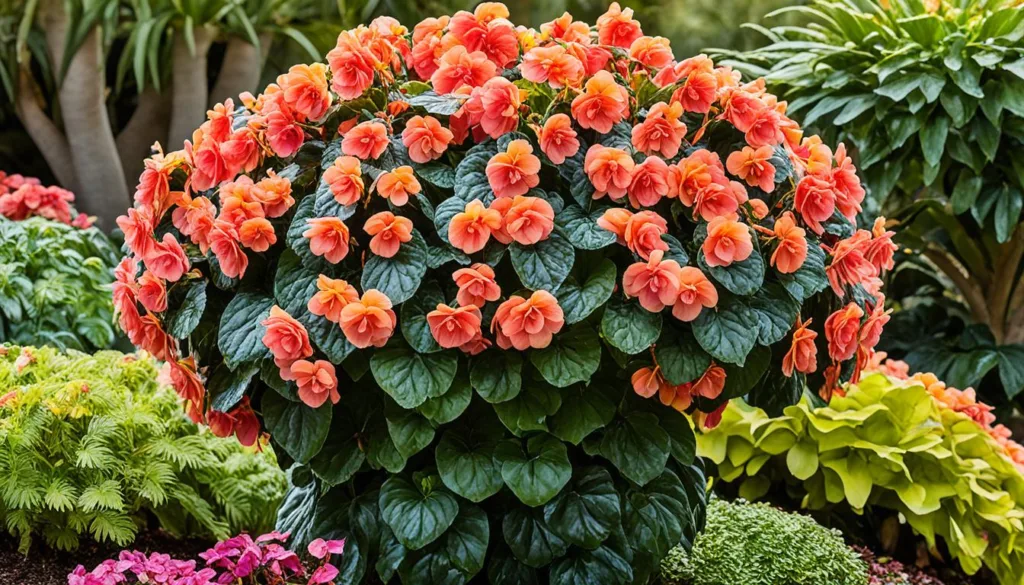
When it comes to caring for begonias in southern locations, one of the key decisions you’ll need to make is whether to keep them indoors or plant them outdoors. Both options have their advantages and challenges, so it’s important to understand the differences and consider your specific circumstances before making a choice.
Indoor Begonia Care:
Keeping begonias indoors allows you to have more control over their growing conditions, which can be beneficial in southern locations where the climate can be unpredictable. Here are some essential tips for indoor begonia care:
- Place indoor begonias in a bright location, preferably near a window with filtered sunlight.
- Maintain moderate humidity levels by using a humidifier or placing the plants on a tray filled with water and pebbles.
- Water indoor begonias regularly, allowing the soil to dry slightly between waterings to prevent overwatering.
- Use a well-draining potting mix specifically formulated for begonias to ensure proper root development.
- Provide regular fertilization to support healthy growth, following the instructions on the fertilizer package.
Outdoor Begonia Care:
Planting begonias outdoors in southern locations can offer the benefit of natural light and exposure to the elements. However, it’s important to take certain precautions to ensure their well-being. Here are some tips for outdoor begonia care:
- Choose a location that receives partial shade to protect begonias from intense sunlight during the hottest part of the day.
- Provide well-draining soil enriched with organic matter to promote healthy root development and prevent waterlogging.
- Water outdoor begonias regularly, keeping the soil evenly moist but not saturated.
- Apply a layer of mulch around the plants to help retain moisture and control weed growth.
- Monitor for pests and diseases regularly and take appropriate action if any issues arise.
Whether you choose to grow begonias indoors or outdoors in southern locations, the key is to understand their specific care requirements and provide them with the optimal growing conditions. Experimenting with different approaches and observing how your begonias respond will help you fine-tune your care routine and ensure the health and beauty of your plants.
Selecting the Right Begonia Species for Florida Gardens
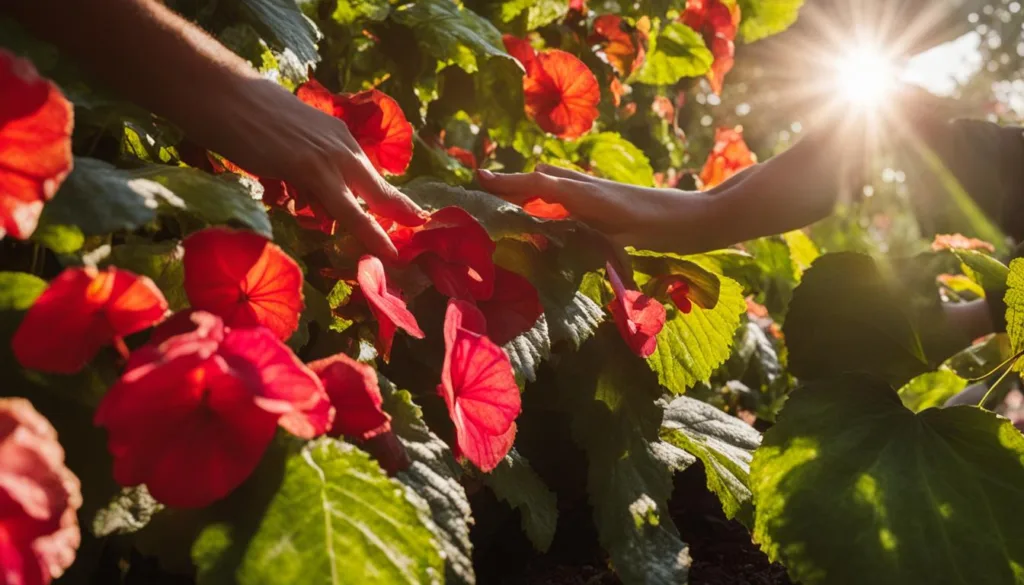
When it comes to creating a vibrant and flourishing garden in Florida, selecting the right begonia species is essential. Each begonia species has unique characteristics and care requirements, making it important to choose the ones that are best suited for the specific conditions of your garden.
Wax Begonias: Versatile and Sun-Tolerant
One begonia species that thrives in Florida gardens is the wax begonia (Begonia semperflorens). Known for its compact form and waxy leaves, wax begonias are versatile and can adapt to a wide range of growing conditions. These begonias are also well-suited for sunny areas and can tolerate a fair amount of sun exposure, making them a popular choice for Florida gardens.
Wax begonias are available in various colors, including shades of pink, red, and white. They are low-maintenance plants that require regular watering and well-drained soil. These begonias are perfect for containers, borders, or ground cover, adding a splash of color and beauty to your garden.
Angel Wing Begonias: Striking Foliage and Flowers
If you’re looking to add a touch of elegance to your garden, angel wing begonias (Begonia maculata) are an excellent choice. These begonias feature eye-catching foliage with unique angel wing-shaped leaves and bright red or pink flowers.
Angel wing begonias thrive in partially shaded areas with well-draining soil. They are great for hanging baskets or as a focal point in your garden. These plants require regular watering, but it’s essential to avoid overwatering to prevent root rot.
Tuberous Begonias: Managing Dormancy and Heat
Tuberous begonias (Begonia x tuberhybrida) are another popular choice for Florida gardens, especially for their stunning flowers. These begonias produce large, showy blooms in various shades and can add a touch of elegance to any garden or patio.
However, tuberous begonias have specific care requirements, particularly when it comes to managing dormancy and heat. In Florida’s warm climate, it’s essential to provide adequate shade during the hottest parts of the day and ensure proper air circulation to prevent overheating.
Tuberous begonias require well-draining soil and regular watering, but it’s crucial to avoid overwatering as it can lead to root rot. These begonias also have a dormant period during winter, where they should be kept in a cool, dry place until spring.
Best Practices for Begonia Care: Nutrition and Soil Requirements
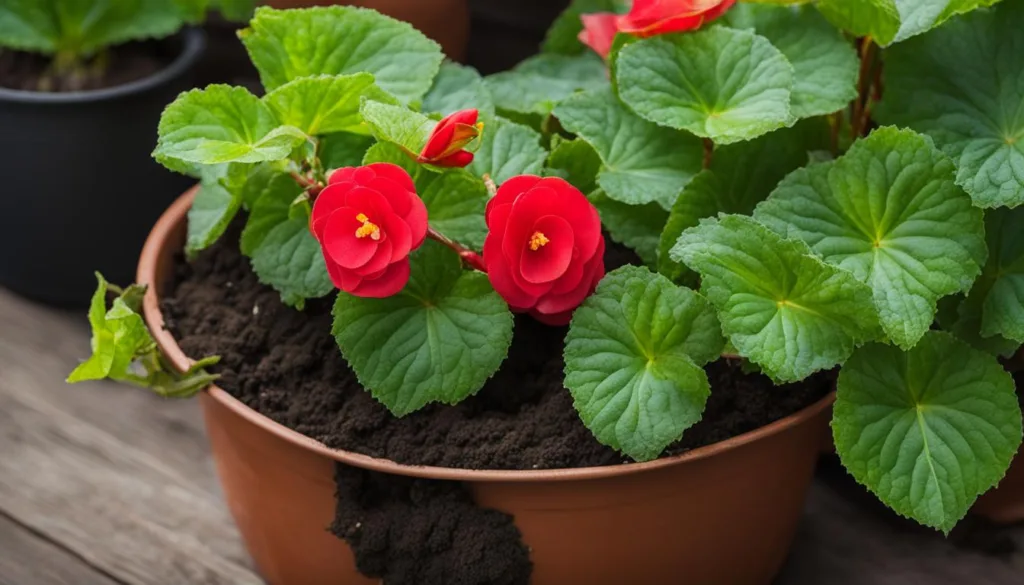
When it comes to ensuring the health and vitality of your begonias, proper nutrition and soil requirements are essential. By providing the right nutrients and creating the ideal growing environment, you can help your begonias thrive and flourish. Here are some best practices for begonia care:
- Fertilization: Begonias benefit from regular fertilization to support their growth and blooming. Use a balanced, water-soluble fertilizer with an N-P-K ratio of 10-10-10 or 20-20-20. Apply the fertilizer according to the instructions on the packaging, taking care not to overfertilize, as it can lead to salt build-up in the soil.
- Soil Composition: Begonias prefer well-draining soil that retains moisture without becoming waterlogged. Use a high-quality potting mix or create a blend of equal parts peat moss, perlite, and vermiculite. This combination provides good drainage while retaining enough moisture for the begonias’ needs.
- Amendments: Depending on the specific needs of your begonias, you may need to make soil amendments to optimize their growing conditions. For example, if the soil is too acidic, adding lime can help raise the pH level. On the other hand, if the soil is too alkaline, adding sulfur can lower the pH level. Conduct a soil test to determine any necessary amendments.
Remember, the key to successful begonia care is balance. Avoid overwatering or overfertilizing, as these practices can harm your begonias. Monitor the soil moisture levels regularly and adjust accordingly. Additionally, be sure to provide adequate drainage to prevent waterlogged roots.
Pests, Diseases, and Common Begonia Care Challenges in Florida
In Florida, begonias may face various pests, diseases, and challenges that can impact their health and growth. It is essential for begonia enthusiasts to be aware of these common issues and take proactive measures to prevent and control them.
Maintaining Vigilance Against Common Pests
Pests can cause significant damage to begonias if left unchecked. Be on the lookout for the following common pests:
- Aphids: These tiny, sap-sucking insects can cause leaf distortion and stunt growth. Use insecticidal soap or neem oil to control them.
- Spider Mites: These microscopic insects can create webbing on leaves and cause discoloration. Regularly misting your begonias and keeping the humidity levels up can help prevent spider mite infestations.
- Mealybugs: These fluffy, white insects can be found in the leaf axils and stem crevices. Use rubbing alcohol or insecticidal soap to remove them.
- Slugs and Snails: These slimy creatures can chew on begonia leaves, leaving behind visible damage. Remove them manually or use beer traps to control their population.
Preventing and Controlling Fungal Diseases
Fungal diseases can thrive in Florida’s humid climate. Implement the following measures to prevent and control fungal diseases:
- Ensure proper air circulation: Good airflow can help prevent fungal spores from settling on begonia leaves. Avoid overcrowding plants and space them appropriately.
- Avoid overhead watering: Wet foliage is more susceptible to fungal diseases. Water at the base of the plants to minimize leaf moisture.
- Apply fungicides: If fungal diseases such as powdery mildew or leaf spot are already present, apply appropriate fungicides following the manufacturer’s instructions.
Addressing Humidity-Related Issues in Begonias
Humidity-related issues can affect begonias, especially in Florida’s hot and humid climate. Here are some tips to address these challenges:
- Water begonias appropriately: Begonias need consistent moisture, but excess water can lead to root rot. Allow the top inch of soil to dry out before watering again.
- Consider using a humidity tray: Placing your begonias on a tray filled with pebbles and water can create a localized humid environment around the plants.
- Provide shade: Begonias can suffer from sunburn in the intense Florida sun. Provide them with some shade during the hottest part of the day to prevent leaf scorching.
- Use mulch: Applying a layer of organic mulch around your begonias can help retain moisture in the soil and regulate temperature.
| Pest/Disease | Symptoms | Prevention | Treatment |
|---|---|---|---|
| Aphids | Leaf distortion, stunted growth | – Regularly inspect and monitor plants – Encourage natural predators – Use insecticidal soap or neem oil |
– Spray insecticidal soap or neem oil – Prune heavily infested areas |
| Spider Mites | Webbing, discoloration | – Maintain high humidity levels – Regularly mist plants – Remove infested leaves |
– Spray with water to dislodge mites – Apply insecticidal soap or neem oil |
| Mealybugs | Fluffy, white insects in leaf axils and stem crevices | – Inspect new plants before introducing them – Isolate infested plants – Remove mealybugs manually |
– Apply rubbing alcohol or insecticidal soap – Prune heavily infested areas |
| Slugs and Snails | Visible leaf damage | – Remove debris and hiding places – Set up beer traps |
– Handpick slugs and snails – Apply organic slug control products |
| Powdery Mildew | White, powdery patches on leaves | – Promote good air circulation – Avoid overhead watering |
– Remove affected foliage – Apply fungicides if necessary |
| Leaf Spot | Brown or black spots on leaves | – Water at the base of plants – Avoid overhead watering |
– Remove affected foliage – Apply fungicides if necessary |
Propagating and Expanding Your Begonia Collection
In order to further enhance your love for begonias, why not try propagating and expanding your begonia collection? This exciting process allows you to create new plants from existing ones, giving you the opportunity to grow a diverse assortment of begonias.
Stem Cuttings: A Simple Propagation Method
One common method of propagating begonias is through stem cuttings. To do this, select a healthy stem from the parent plant and carefully cut it just below a leaf node. Remove any lower leaves, leaving only a few at the top. Dip the cut end of the stem in a rooting hormone to encourage root development, and then plant it in a well-draining potting mix. Keep the soil moist and provide indirect light. In a few weeks, you should start to see new roots forming, indicating successful propagation. Once the roots have developed, you can transfer the new begonia plant to its own container.
Starting Begonias from Seeds
Another method of expanding your begonia collection is by starting begonias from seeds. Begin by selecting high-quality begonia seeds from a reputable source. Fill a seed tray or pots with a sterile seed-starting mix. Gently press the seeds onto the surface of the soil, making sure not to bury them too deeply. Mist the soil with water to keep it moist, but not overly wet. Place the tray or pots in a warm and bright location, providing adequate ventilation. Within a few weeks, you should see tiny seedlings emerging. As they grow, carefully transplant them into individual pots, ensuring each seedling has enough space to develop.
Ensuring Successful Root Development
Regardless of the propagation method you choose, it is crucial to ensure successful root development for your newly propagated begonias. To promote root growth, maintain proper moisture levels by watering the plants when the top inch of soil feels dry. Avoid overwatering, as this can lead to root rot. Providing a balanced fertilizer specifically formulated for begonias can also help nourish the young plants and support their root development. Additionally, ensure that the newly propagated begonias receive adequate light but avoid direct sunlight, which can be too intense for them. With proper care and patience, your propagated begonias will flourish and contribute to the expansion of your begonia collection.
Conclusion
In conclusion, successfully caring for begonias in the Florida climate requires understanding and meeting their specific needs. By following the tips and practices outlined in this guide, you can ensure that your begonias thrive and flourish.
First and foremost, creating the ideal environment is essential for begonia care in Florida. Pay attention to factors such as lighting, humidity levels, and temperature control to establish the perfect conditions for your plants.
Additionally, selecting the right begonia species for your Florida gardens is crucial. Consider the characteristics and care requirements of wax begonias, angel wing begonias, and tuberous begonias to choose the species that will thrive in your specific conditions.
Lastly, keep in mind the best practices for begonia care, including proper nutrition and soil requirements. Feeding your begonias with the right fertilizers and ensuring they have the appropriate soil composition will contribute to their overall health and vitality.
By taking these factors into consideration and remaining vigilant against common pests, diseases, and challenges, you can enjoy a beautiful and thriving begonia collection in your Florida garden. Remember, providing the necessary care and attention will reward you with stunning blooms and lush foliage.
 Little Garden Tips
Little Garden Tips




